|
Updated: 08/03/2012 |
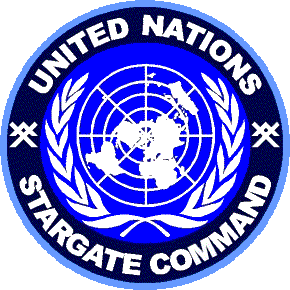
|
CON-063 |

| ||
|---|---|---|---|---|---|
| Previous CON | RGHQ-51 Home Page | CON Reports Listings | DSTL Reports Listings | Ops Listings | Gate ID Chart | Next CON |
|---|
|
Updated: 08/03/2012 |

|
CON-063 |

| ||
|---|---|---|---|---|---|
| Previous CON | RGHQ-51 Home Page | CON Reports Listings | DSTL Reports Listings | Ops Listings | Gate ID Chart | Next CON |
|---|
Saturday: 10:00-17:00: during the day, the Intelligence Conference was conducted, commencing with a Power Point presentation by Lieutenant Colonel Lara Atsuko Tachikoma RGHQ-51's Executive Officer, providing an overview of the history of the CONTACT campaign. This was followed by a briefing by RGHQ-51's "S2" First Lieutenant Kira Lewis on the current state of knowledge about the ABC ("Alien Biological Contamination" - the hostile alien airborne nanite technology). After lunch there was an in depth discussion of the current situation and objectives were set for 2007. See LTC Tachikoma's report below for more details. NB: when possible a copy of the Power Point presentation will be posted on-line for personnel to consult.
Saturday 18:00+: The Regimental Dinner commenced with a drinks reception at 18:00, and the meal itself began at 18:30. As this was the 10th anniversary of the CONTACT campaign, it was nice to see some old comrades: Second Lieutenant (Dr) Bradley Stokes (former and current Chief Medical Officer), Second Lieutenant Theresa Stewart (RGHQ-51's first S2 - Intelligence Officer), Colonel James T. Law (the then Commanding Officer of BASE-56 in New Zealand, in charge of the recovery of BASE-78 formerly Lake Vostok in Antartica, lost in 1999 - now assigned to the RGHQ-51 Military Police Company), Major Peter Appleby (former S5, Civil Affairs Officer - that is chief of base security - MPC) and Captain James Jameson (another former S2 - Intelligence Officer). The turnout for the dinner was very good in terms of numbers and people's efforts. Posh frocks, dinner jackets, and dress blue uniforms all around, very impressive. See the Gallery at the bottom of this page (courtasy of Corporal Nicholas Owenn).
| AwardS & Decorations | ||
|---|---|---|
| 1 | Second Lieutenant Bradley Aitken | Achievement Medal |
| 2 | Second Lieutenant Derek A. Church | Commendation Medal |
| 3 | Lieutenant Colonel Lara Atsuko Tachikoma | Commendation Medal |
| 4 | Master Sergeant Gillian Kelley (Medical Officer) | Meritorious Service Medal |
| 5 | First Lieutenant Kira Lewis | Meritorious Service Medal |
| 6 | First Lieutenant Theresa Stewart | Soldier's Medal |
| 7 | Master Sergeant Gillian Kelley (Medical Officer) | Legion Of Merit |
| 8 | Staff Sergeant John Newman (Medical Officer) | Silver Star |
Sergeant Bruce I. O'Malley, who sadly was unable to attend will be awarded his Silver Star at the next available opportunity.
After the awards, came the Port and tosts, as usual given by the youngest person present. Again this year this was Lieutenant Kira Lewis, who did a great job. Captain David Kilkenny then set about photographing the medal winners (his photos are yet to be uploaded, the ones shown are courtasy of Corporal Nicholas Owen). First Sergeant J. Reddman provided some light entertainment in the shape of a large multi-player F1 race track, after which most folks settled down to the serious business of drinking and telling old war stories. The last of us retired circa 04:00.
The Sunday was devoted to technical and proceedural issues. Including the deployment of new weapons and equipment for 2007. I (BGEN A.R.Courtney) provided a presentation, with the assistance of LTC Lara Tachikoma and her computer's projector on the new dress uniform, which is replacing the difficult to procure "blues". Details will be posted at a later date.
Both the conferences, the dinner and the shooting trials were considered by all as a great success. I would like to thank everyone for making this operation a great event and a pleasure for all, and hopefully, those of you who could not make it this year, will be along for the next one.
Prepared By Brigadier General Alasdair R. Courtney.
| IC Roster | ||
|---|---|---|
|
1. AITKEN. Bradley. 2LT * 2. APPLEBY. Peter. MAJ (17th-18th) 3. CHURCH. Derek. 2LT 4. COURTNEY. A. R. BGEN (S1) 5. DELPERDANCE. Robert. PFC (17th) 6. FISHER. Kim. PFC (17th) 7. FROST. Jonathon. SGT. 8. JAMERSON. James. CPT (17th-18th) |
9. KELLEY. Gillian. MSGT (MO) 10. KILKENNY. David. CPT (CMO) 11. KING. Elizabeth. 2LT 12. KNIGHT. Alice. SSGT 13. LAW. James T. LTC (CO@BASE-56NZ) (17th) 14. LEWIS. Kira. (S2) 15. NEWMAN. John. SSGT 16. OWEN. U. Nicholas. CPL |
17. REDDMAN. J. SFC 18. RHYS. David. LTC (S3) 19. SACKVILLE-WEST. M. Bertrand. 1LT 20. STEWART. Theresa. 1LT (17th) 21. STOKES. Bradley. 1LT (MO) (17th) 22. TACHIKOMA. Lara A. LTC (XO) 23. WARD. Christine. SGT (Sat/Sun) Notes:
|
| OoC Roster | ||
|
1. ANDERSON. Simon. (17th) 2. ANDERSON. Tracie. (17th) 3. BERRY. Susan. 4. BOOLEY. Christopher. (17th) 5. BRIGHT. David. (17th) 6. CLARKE. Stephen. 7. DOIDGE. Simon. 8. FISHER. Kim. (17th) |
9. FOSTER. Patricia. (17th-18th) 10. FURLONG. Susan. 11. GATHERCOLE. John. (17th-18th) 12. GRANA-PRIEGO. Anthony 13. JACKSON. Frank. 14. MOLLOY. John. 15. PARKER. Susan. 16. POLLARD. Ashley R. |
17. RUSHEN. Clive. 18. SLAUGHTER. Martin. (17th-18th) 19. STRATMAN. Gary. 20. SWIFT. Nikki. 21. THOMAS. Simon. 22. WAYLAND. Dean C. 23. WORSFOLD. Graham. |
| Name | Category | Percentage | Weapon used |
|---|---|---|---|
| Clarke. Stephen. | P-GBB | 100 | Western Arms SV 5" |
| Clarke. Stephen. | P-AEP | 98 | Tokyo Marui Glock 18C |
| Doige. Simon. | R-SA | 80 | Tokyo Marui G-Spec |
| Doige. Simon. | R-AEG | 91 | ICS SR16 |
| Doige. Simon. | SMG-ECM | 98 | Tokyo Marui H&K MP7A1 |
| Doige. Simon. | P-AEP | 100 | Tokyo Marui Glock 18C |
| Foster. Patricia. | R-AEG | 75 | Tokyo Marui M4A1 |
| Foster. Patricia. | P-AEP | 100 | Tokyo Marui Glock 18C |
| Furlong. Susan. | P-AEP | 70 | Tokyo Marui Glock 18C |
| Jackson. Frank. | R-AEG | 84 | Tokyo Marui H&K G36C |
| Jackson. Frank. | SMG-ECM | 100 | Tokyo Marui H&K MP7A1 |
| Jackson. Frank. | P-GBB | 100 | Western Arms SV 5" |
| Jackson. Frank. | P-AEP | 97 | Tokyo Marui Glock 18C |
| Parker. Susan. | P-GBB | 99 | Western Arms SV 6" |
| Rushen. Clive. | R-AEG | 86 | Tokyo Marui H&K G36C |
| Rushen. Clive. | SMG-AEG | 95 | Tokyo Marui FN P-90 |
| Rushen. Clive. | P-AEP | 97 | Tokyo Marui Glock 18C |
| Stratman. Gary. | R-AEG | 90 | Tokyo Marui M14 |
| Stratman. Gary. | P-GBB | 97 | Tokyo Marui 5.1 Hi-Cap |
| Thomas. Simon. | R-AEG | 89 | Tokyo Marui M4S |
| Thomas. Simon. | SMG-ECM | 100 | Tokyo Marui H&K MP7A1 |
| Thomas. Simon. | P-GBB | 96 | Tokyo Marui 5.1 Hi-Cap |
Raw data courtasey of Stephen Clarke.
| Prefixs- | |
|---|---|
| C- | Carbine (300-450mm barrel) |
| GL- | Grenade Launcher (-40mm gas grenades etc.) |
| LMG | Light Machine Gun (always AEGs) | P- | Pistol |
| R- | Rifle (>450mm barrel) |
| S- | Shotgun (Tripple barrelled) |
| SMG- | Sub Machine Gun (<300mm barrel) |
| -Suffixs | |
| -AEG | -Automatic Electric Gun (>0.64J/80mps) |
| -AEP | -Automatic Electric Pistol (<0.5-J/70mps) |
| -ECM | -Electric Compact Machine Gun (0.5-0.64J/70-80mps) |
| -GBB | -Gas Blow Back |
| -GNBB | -Gas Non Blow Back |
| -SA | -Single Action |
Type 1 nanites look like something designed to sit on bacteria. They infest big cats, primates, or similar large animals with complex neuro-systems that are carnivores or omnivores. Infestation will make them hyper aggressive against other large animals, but it seems that infested hosts can recognize their own [Ed. This is possibly due to the ability of most animals to see the UV light emitted from infected blood vessels at certain points of the body].
Type1 variant A nanites sit on the bottom of the brain stem [Ed. motivational behaviour modifier], while variant Bs are involved in fixing nerve [Ed. and to a lesser extent tissue] damage Type 1 variant C to J nanites have functions, most of which are not clearly understood. Type 1 variant K is now known to be a pain suppressor that allows the host to ignore pain [Ed. pain suppression is now known to be limited and not absolute].
Type 2 nanites are larger and cruder looking structures. They have two functions. The first is to destroy any unattached Type 1 nanite variant they find in the environment. The second function appears to be reprogramming Type 1 variants in infected personnel, so as to gain control of the host.
Hosts exposed to Type 2 nanites undergo a change, which converts all the redundant C to J nanites into Bs, and excess A variants in the brain are released, after conversion into variant Bs. The Type 2 nanites then make themselves comfortable by sitting on top of the A variants at the base of the brain. It is not known how the K variants are accommodated in this cycle.
When an infested host controlled by the Type 2 dies, the Type 2 nanites destroy all the remaining variant A nanites they are sitting on in the brain, and then evacuate from the host [Ed.The T2's, like their smaller cousins the T1's exit via the mouth, nose, ears, tear ducts or any open wounds, being too large to pass through the skin].
A fuller and more detailed report on this information will be forthcoming in due course.
The locations of the Arctic gates were identified, and the operations to retrieve broken gates from offworld were also mentioned. The involvement of Non-Governmental Organizations (NGO) eg; Nakamura Corporation [+ the NSF, Philips Corp, SSI, Star Labs and Tiger Industries], was also discussed and evidence shown of the developmental impact on new technology and training programmes gained from access to offworld materials.
A copy of the power point presentation will be available in due course.
The discussion also highlighted the involvement of NGOs in offworld pursuits and the development of their offworld processing plants. Furthermore, the formation of The Antarctic Stargate Command [TASC], and their response to the escalating attacks on offworld assets was analysed. One implication was that infested personnel were setting up offworld archives to help their cause.
The evidence of contact with Type 2 & 3 personnel was highlighted, and the possibility that C166A was evacuated in 1994 due to electromagnetic interference, which may have been caused by worm activity, was suggested.
A copy of the power point presentation will be available in due course.
Then a hypothesis about the nanites was presented (note that this has now been modified slightly after LT Lewis's report to bring the terminology in line with current knowledge), and then a Gate & Worm hypothesis presented was discussed.
A copy of the power point presentation will be available in due course.
Last years objectives were read out as follows:
Objectives one and two not achieved. Three needs someone to go through and count the number of personnel lost and compare with the previous years results. Four is ongoing, in spite of losing our gravity analysis probe on one occasion, but more data needs to be collected. Five remains unanswered. Six was less than hoped for. Seven has become part of the regular mission requirement. Eight still requires more work. Nine, we have a new medical system in place and running.
Plan: The following objectives were then agreed:
Owen had gone through a gate in Indonesia in the 1960s, met some raggedy ass Germans and whupped their asses in some good old-fashioned hand-to-hand combat. When the team came back through the gate they were caught in some weird kind of time dilation whereby they did not age, but were conscious throughout, as they travelled through the gate and arrived in their future a few years ago [1999]. After they were found the team members were hospitalised from the psychological trauma of the travel.
Plan: Owen will write up a report that HQ will approve for dissemination to the Marines as it gives background information. [see The Owen Report. 05/01/2007]
For the report of the OOC portion of the conference please click HERE. END OF REPORT
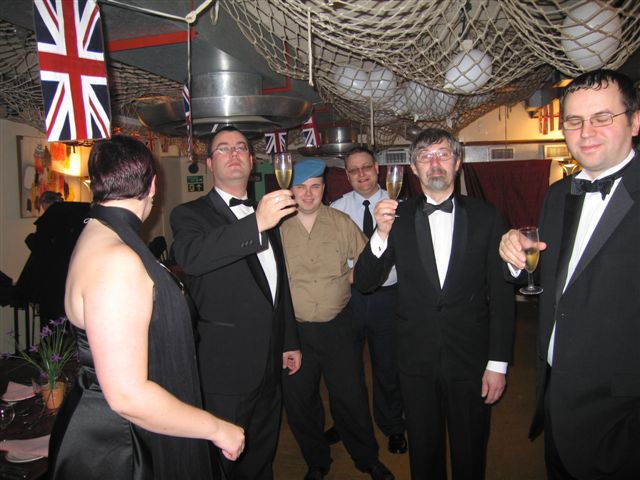
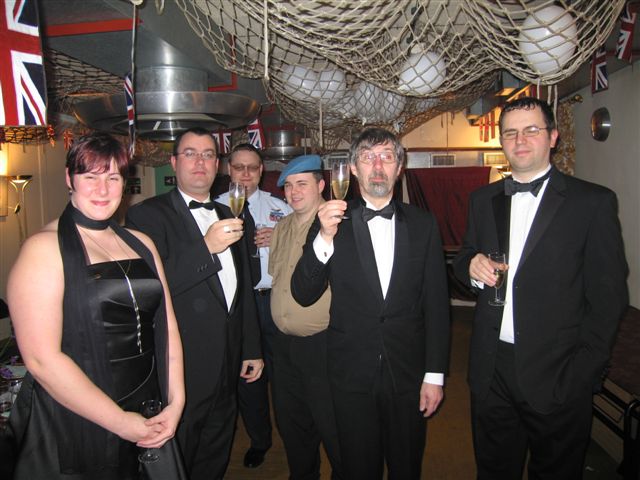
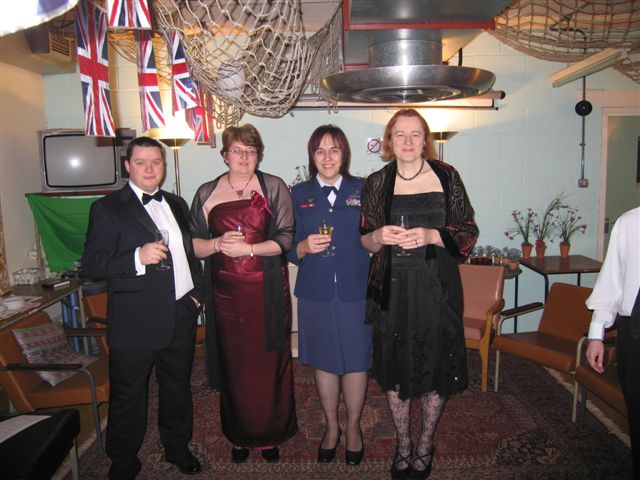
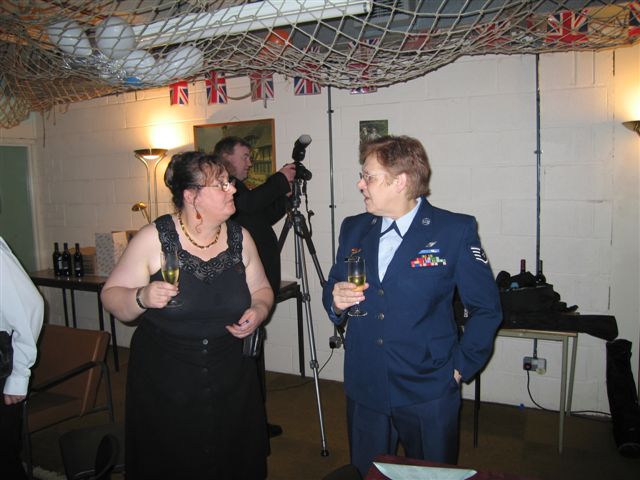
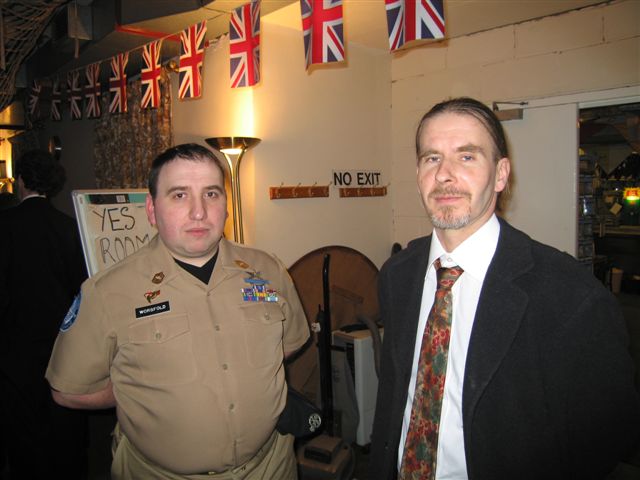
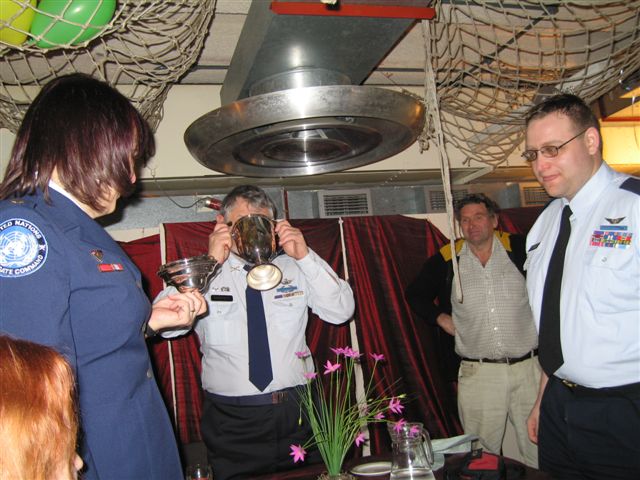
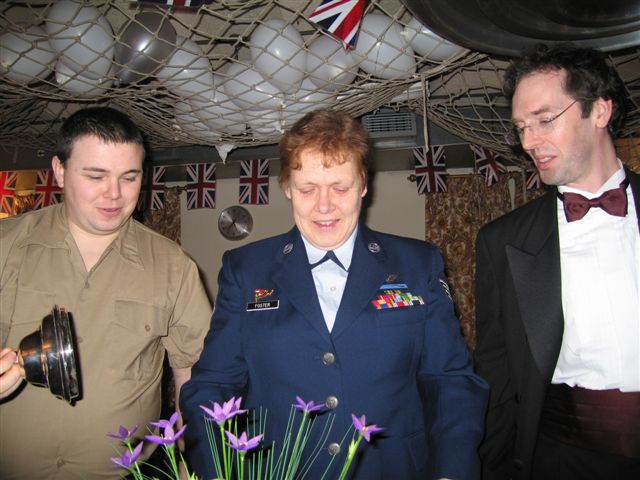
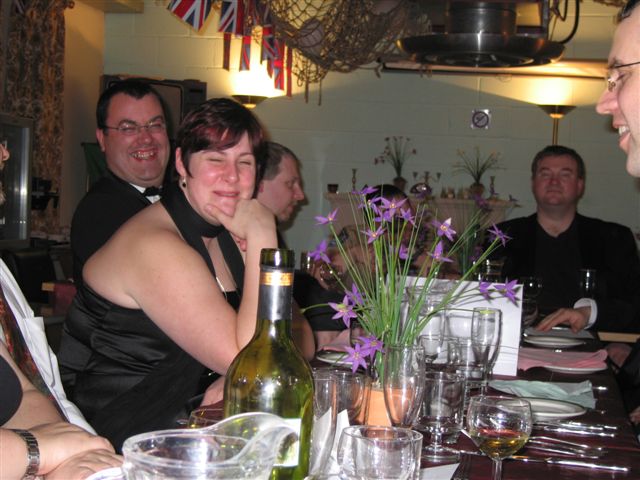
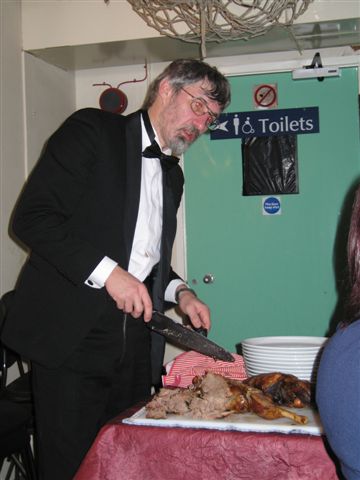
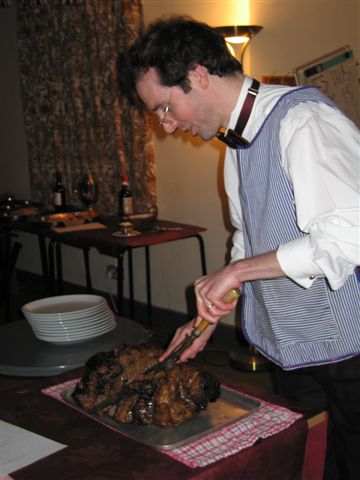
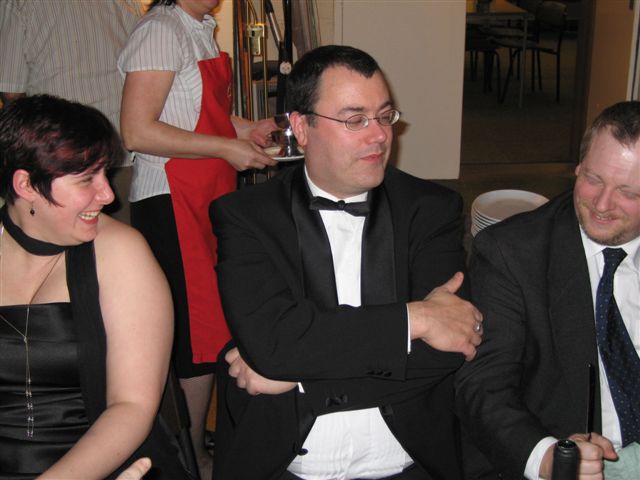
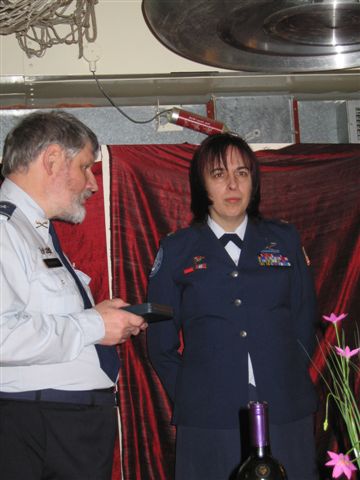
|
|
|

End of Page